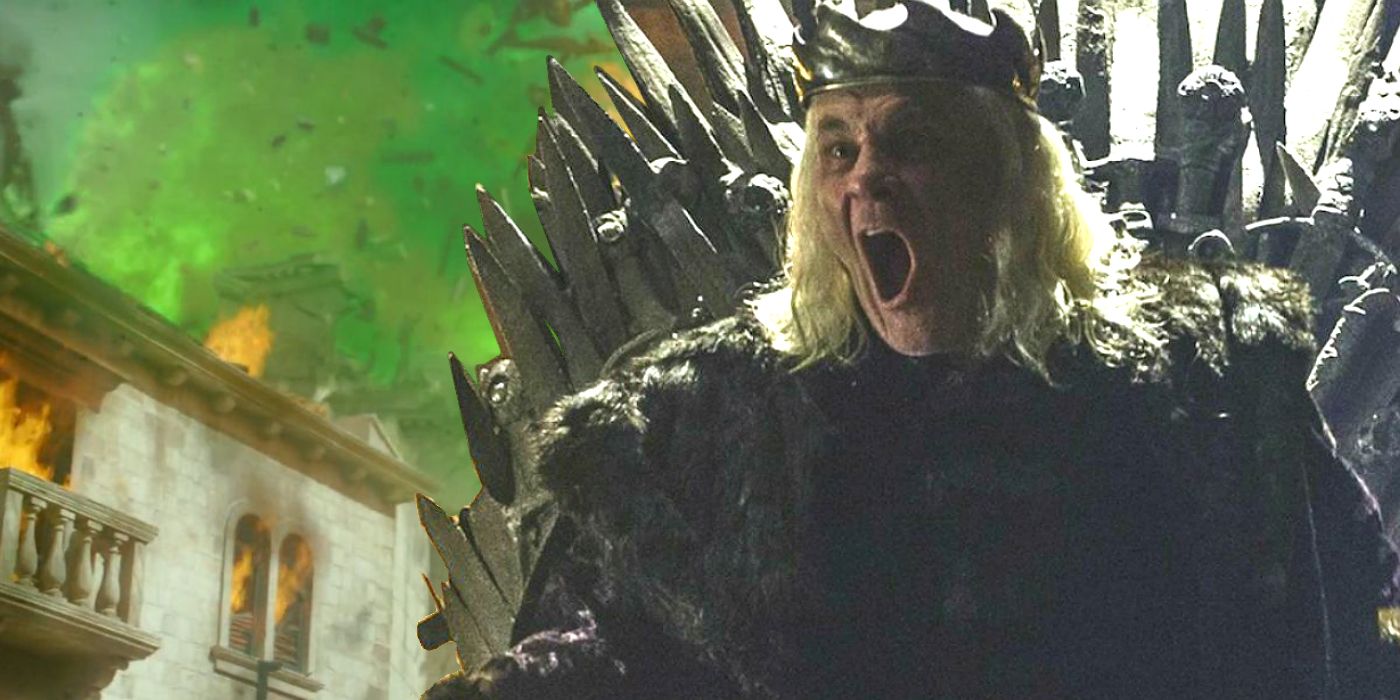Historical Context of “The Mad King”: The Mad King Got

The mad king got – The term “The Mad King” has been used throughout history to describe rulers who exhibited erratic, unpredictable, or irrational behavior. The origins of the term can be traced back to ancient times, when it was used to refer to rulers who were believed to be possessed by evil spirits or gods.
The Mad King got up from his throne and walked to the window. He looked out at the city below, and his eyes narrowed. He could see the people milling about, going about their daily lives. He wondered what they would think if they knew the truth about him.
He was not mad, he was just different. He saw things that other people did not see. He knew things that other people did not know. And he was going to use that knowledge to change the world. But first, he needed to know what time Game of Thrones aired.
He needed to know when he could finally see the end of the story.
Over time, the term “The Mad King” has been applied to a wide range of historical figures, including:
- Nero, the Roman emperor who is said to have set fire to Rome and persecuted Christians.
- Ivan the Terrible, the Russian tsar who is known for his cruelty and paranoia.
- George III, the British king who suffered from mental illness.
- Ludwig II of Bavaria, the German king who built extravagant castles and was eventually declared insane.
The cultural and societal factors that have contributed to the perception of certain rulers as “mad” are complex and varied. In some cases, rulers who exhibited unconventional or eccentric behavior were seen as a threat to the established order. In other cases, rulers who were perceived as weak or indecisive were seen as unfit to rule.
Whatever the reasons, the term “The Mad King” has been used throughout history to describe rulers who have been seen as different, dangerous, or unfit to rule.
The Mad King’s reign of terror left a deep scar on Westeros, but his story is far from over. A new TV show, A Knight of the Seven Kingdoms , will delve into the events leading up to the Mad King’s downfall and the aftermath of his death.
The show promises to shed new light on one of the most enigmatic characters in Game of Thrones.
Literary and Artistic Depictions of “The Mad King”
The archetype of the “Mad King” has been a recurring figure in literature and art throughout history, captivating audiences with its portrayal of psychological turmoil, political intrigue, and the fragility of power. These depictions have profoundly influenced our understanding of madness, sovereignty, and the complexities of the human psyche.
Prominent Literary Works
One of the most famous literary depictions of a Mad King is Shakespeare’s King Lear, a tragic figure whose descent into madness is triggered by his own hubris and the betrayal of his daughters. Lear’s madness is characterized by delusions, hallucinations, and a profound loss of reason, mirroring the chaos and disintegration of his kingdom.
Another notable example is Hamlet’s uncle, Claudius, who murders his brother to seize the throne. Claudius’s guilt and paranoia drive him to madness, leading to his eventual downfall. His madness manifests in his inability to confront his actions and the constant fear of being discovered.
Artistic Representations
In the visual arts, the Mad King has been depicted in various forms. Francisco Goya’s painting “Saturn Devouring His Son” portrays the Roman god Saturn as a monstrous figure consuming his own offspring, a powerful allegory of the destructive nature of madness.
Edvard Munch’s iconic painting “The Scream” depicts a figure with a distorted face and swirling colors, expressing the existential anguish and psychological turmoil often associated with madness.
Psychological and Emotional Complexities
Characters portrayed as Mad Kings often exhibit a range of psychological and emotional complexities. Their madness can be a manifestation of trauma, grief, or the overwhelming burden of power. It can also represent the fragility of the human mind and the destructive potential of unchecked emotions.
These depictions have contributed to our understanding of the complexities of madness and its devastating effects on both the individual and society. They challenge our perceptions of sanity and reason, inviting us to confront the darkness that can reside within us all.
Psychological and Sociological Perspectives on “The Mad King”

The behavior and motivations of individuals labeled as “mad kings” have been a subject of fascination and speculation for centuries. Psychological and sociological theories offer various explanations for the development of such individuals, considering factors such as mental illness, power dynamics, and social isolation.
Role of Mental Illness, The mad king got
Mental illness has often been cited as a contributing factor to the erratic behavior and decision-making of “mad kings.” Conditions such as schizophrenia, bipolar disorder, and paranoia can lead to delusions, hallucinations, and impaired judgment, which can manifest in unpredictable and disruptive actions.
Power Dynamics and Isolation
The immense power and isolation that come with being a monarch can contribute to the development of psychological issues. The lack of peers and the constant pressure to maintain authority can lead to a sense of paranoia and a disconnect from reality. Moreover, the sycophantic behavior of courtiers and the absence of genuine relationships can further exacerbate feelings of isolation and loneliness.
Societal Norms and Stigmatization
Societal norms and expectations play a significant role in shaping perceptions of “madness.” Individuals who deviate from accepted standards of behavior may be labeled as “mad” and marginalized by society. This stigmatization can lead to further isolation and reinforce feelings of alienation and persecution.
Conclusion
The psychological and sociological perspectives on “mad kings” provide a complex and multifaceted understanding of the factors that can contribute to the development of such individuals. Mental illness, power dynamics, and social isolation all play a role in shaping the behavior and motivations of these historical figures.
The mad king got the news of his father’s death, and he was so mad that he started to cry. He cried for days, and he refused to eat or drink. His servants were worried about him, but they couldn’t do anything to help him.
The mad king got worse and worse, and he eventually died of starvation. Read more about the mad king got.
The Mad King got his just desserts, but his legacy lived on in the stories and songs of Westeros. One such tale is told in a knight of the seven kingdoms show , where a young knight must confront the ghosts of the past and the madness that threatens to consume him.
Amidst the annals of history, the tale of the mad king got unfolds, a cautionary chronicle of a monarch consumed by madness. His erratic decrees and bizarre behavior plunged his kingdom into chaos, leaving a legacy of ruin and despair.
Explore the depths of this enigmatic monarch’s descent into madness in the captivating narrative of the mad king got , where the boundaries of sanity and sovereignty blur, and the consequences of unbridled power are laid bare.